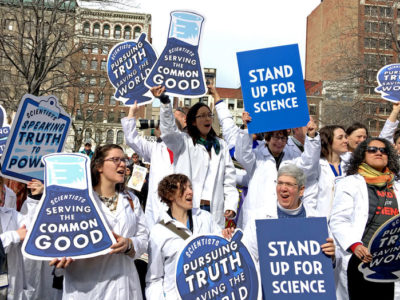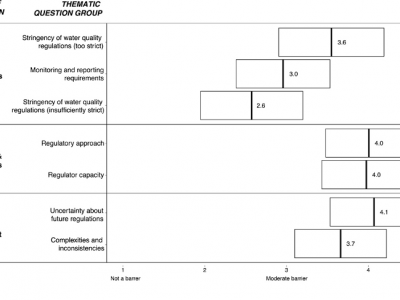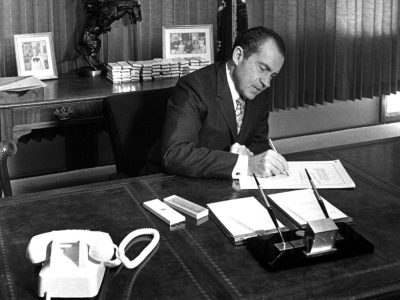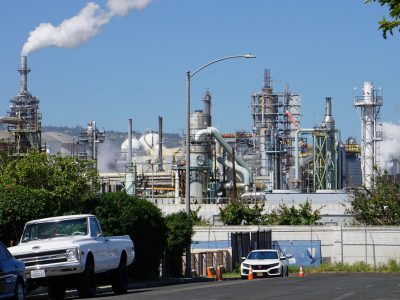Pollution & Health
We Need an Environmental Dr. Fauci
Much of environmental law is about protecting public health. But the Trump Administration won’t listen.
During the coronavirus crisis, Dr. Anthony Fauci has become the voice of reason. Much of the public turns to him for critical information about public health, while even Trump finds it necessary to listen. In the Trump era, no one plays that role in the environmental area. The result is a mindless campaign of deregulation …
Continue reading “We Need an Environmental Dr. Fauci”
CONTINUE READINGStill Not SAFE
The Trump administration moves ahead with plans to roll back Obama-era fuel economy standards.
After months of delay, the Trump administration has reportedly chosen this coming week—in the middle of a nationwide crisis due to the COVID-19 pandemic—to finally release the second part of its two-part rollback of Obama-era automotive fuel economy standards. This isn’t the only environmental rollback action the administration is planning to take during the coming …
Continue reading “Still Not SAFE”
CONTINUE READINGThe Environmental Pollution Agency Prioritizes Environmental Rollbacks While Dropping Environmental Enforcement
New Policy Allows Companies to Use Covid-19 As an Excuse to Pollute
The covid-19 epidemic is providing the Environmental Protection Agency with the perfect opportunity to demonstrate its priorities: full speed ahead with environmental roll backs, including greenhouse gas/fuel economy standards for cars, cutting back on the regulation of mercury from power plants, loosening regulations on coal ash from coal plants and more. Employees at EPA have …
CONTINUE READINGUnderstanding wastewater utility views on innovation and regulation
by Luke Sherman, Alida Cantor, Anita Milman, and Michael Kiparsky
The same underlying technology has been used in the municipal wastewater sector for 100 years. New technologies that treat effluent more efficiently and effectively exist, yet deployment of those technologies has been slow. The limited adoption of new technologies in the wastewater sector raises questions about how to encourage innovation. Popular narratives around innovation sometimes …
Continue reading “Understanding wastewater utility views on innovation and regulation”
CONTINUE READINGUdall and Lowenthal Lead Charge to Break Free From Plastic Pollution
The Senator and Representative introduce bold new federal plastics legislation
Last week, Senator Udall (D-NM) and Representative Lowenthal (D-CA), joined by Senator Merkley (D-OR) and Representative Clark (D-MA), announced that they were introducing federal legislation to combat the plastic pollution crisis. The Break Free From Plastic Pollution Act will go beyond past Congressional efforts to address plastic pollution, such as the Save Our Seas Act, …
Continue reading “Udall and Lowenthal Lead Charge to Break Free From Plastic Pollution”
CONTINUE READINGFrom the Grand Canyon to Contaminated Cantaloupes – and More
Five books with fresh perspectives on environmental issues.
Law reviews make little effort to track new books, unlike other journals in other disciplines . So it’s pretty much hit-or-miss whether you learn about relevant new books. I wanted to share some interesting finds that have crossed my desk, joined a growing pile of unread books, and then slowly left the pile. The subjects …
Continue reading “From the Grand Canyon to Contaminated Cantaloupes – and More”
CONTINUE READINGDark Waters in Dark Times
Citizen Petition Presses EPA To Call Chemicals in Environmental Docudrama “Hazardous Waste”
This holiday season, A-list actors drew moviegoers to a film with a distinctly un-Hollywood plot line: A company dumps thousands of pounds of toxic, long-lived chemicals (PFAS, or per-and polyfluoroalkyl substances) into unlined pits that drain into a farming community’s drinking water. Local residents fall ill, some terminally. A heroic attorney (Mark Ruffalo) represents them …
Continue reading “Dark Waters in Dark Times”
CONTINUE READINGCommemorating the National Environmental Policy Act’s 50th Anniversary
Celebrating NEPA: America’s Most Transformative, Overarching & Catalytic Environmental Law
On a snowy New Year’s Day in 1970–50 years ago today–then-President Richard Nixon signed into law the National Environmental Policy Act. NEPA’s passage marked the beginning of America’s modern environmental law era. It was followed by Congressional passage of a series of other federal environmental laws over the next decade–major statutes that to this day …
Continue reading “Commemorating the National Environmental Policy Act’s 50th Anniversary”
CONTINUE READINGCharting the Progress of the Latest Chapter in American Climate Change Litigation
State and Local Governments’ Common Law-Based Lawsuits Against the Energy Industry Are Steadily Gaining Traction
The latest chapter in American climate change litigation has been launched by local governments–and one state–across the U.S. against domestic and international fossil fuel companies. These lawsuits have been brought under one of the oldest and most venerable legal doctrines–state common law. They seek compensation from the energy industry for the myriad, adverse effects of …
Continue reading “Charting the Progress of the Latest Chapter in American Climate Change Litigation”
CONTINUE READINGAn Oil and Gas Setback in Los Angeles Would Not Create Billions in Liability
A recent report from the Petroleum Administrator relied on incorrect and incomplete legal assumptions about the City’s potential liability to oil and gas operators. Here’s why it matters.
This week, Sean Hecht and I (in our capacity as attorneys in the Frank G. Wells Environmental Law Clinic at UCLA School of Law) sent a letter on behalf of the Los Angeles Neighborhood Land Trust to Mayor Eric Garcetti, the Los Angeles City Attorney’s office, and the Los Angeles City Council. (Our letter built …
Continue reading “An Oil and Gas Setback in Los Angeles Would Not Create Billions in Liability”
CONTINUE READING










